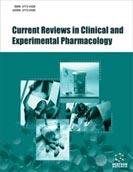Abstract
Nalidixic acid is a synthetic antibiotic discovered in the 1960s during the synthesis of chloroquine, an effective drug for treating malaria. Nalidixic acid became the backbone for developing quinolones that are now widely used clinically for the treatment of various bacterial infections. The mechanism of action of quinolone involves the inhibition of topoisomerase II and topoisomerase IV. In attempts to improve the potency of fluoroquinolones, modifications were made; these modifications resulted in the emergence of newer generations of fluoroquinolones. Also, due to these modifications, several side effects were noted, including blood glucose control aberrations. Among fluoroquinolones that disrupt glucose homeostasis is gatifloxacin, which is in the third-generation category. Fluoroquinolones have been demonstrated to induce glycaemic aberrations by enhancing pancreatic cells' insulin secretion and interaction with antidiabetic agents via inhibition of cytochrome P450 enzymes. Considering their ability to induce hypoglycaemia, few studies have reported repurposing of quinolones as antidiabetic agents. Hyperglycaemia has also been reported to often precede hypoglycaemia. Due to the ability to decrease blood glucose, it is not surprising that some authors have reported novel quinolone derivates with antidiabetic properties in experimental studies. However, there is still a paucity of data regarding the effect of quinolones derivatives on glycaemic control. Understanding how fluoroquinolones lower blood glucose concentration could serve as the basis for developing novel quinolone derivatives with the sole purpose of lowering blood glucose concentrations. Although there are various conventional anti-hyperglycaemic agents, due to their associated shortfalls as well as an increase in the prevalence of diabetes, the discovery and development of new antidiabetics are warranted.
Keywords: Quinolones, diabetes mellitus, antidiabetic activity, hyperglycaemia, hypoglycaemia, glycaemic.
Graphical Abstract
[http://dx.doi.org/10.1016/j.ejmech.2013.01.057] [PMID: 23528390]
[http://dx.doi.org/10.1086/428051] [PMID: 15942877]
[http://dx.doi.org/10.1002/jcph.968] [PMID: 28741299]
[http://dx.doi.org/10.1056/NEJMoa055191] [PMID: 16510739]
[http://dx.doi.org/10.1021/jm01240a021] [PMID: 14056431]
[http://dx.doi.org/10.1021/bi5000564] [PMID: 24576155]
[http://dx.doi.org/10.1016/B978-012059517-4/50003-9]
[http://dx.doi.org/10.2165/00003495-198530060-00003] [PMID: 3908074]
[http://dx.doi.org/10.1039/C9MD00120D] [PMID: 31803393]
[http://dx.doi.org/10.2165/00003495-199753050-00007] [PMID: 9129868]
[http://dx.doi.org/10.2165/00003495-199957030-00007] [PMID: 10193688]
[http://dx.doi.org/10.1086/378809] [PMID: 14557966]
[http://dx.doi.org/10.1592/phco.19.1.21.30507] [PMID: 9917076]
[http://dx.doi.org/10.2337/diabetes.51.2007.S368] [PMID: 12475777]
[http://dx.doi.org/10.1042/CS20110386] [PMID: 22117616]
[http://dx.doi.org/10.2165/00002018-200831040-00002] [PMID: 18366239]
[http://dx.doi.org/10.1016/j.mehy.2014.05.013] [PMID: 24947193]
[http://dx.doi.org/10.1086/600294] [PMID: 19545207]
[http://dx.doi.org/10.1016/j.pcd.2014.10.006] [PMID: 25466161]
[http://dx.doi.org/10.2165/11536360-000000000-00000] [PMID: 20397737]
[http://dx.doi.org/10.1371/journal.pone.0167132] [PMID: 27907019]
[http://dx.doi.org/10.1016/j.bbrc.2013.05.047] [PMID: 23702482]
[http://dx.doi.org/10.1186/s13098-019-0456-4] [PMID: 31384309]
[http://dx.doi.org/10.1177/0192623318809062] [PMID: 30407147]
[http://dx.doi.org/10.1016/j.ejphar.2006.09.043] [PMID: 17070519]
[http://dx.doi.org/10.1248/bpb.30.644] [PMID: 17409495]
[http://dx.doi.org/10.1016/j.bcp.2008.11.019] [PMID: 19073153]
[http://dx.doi.org/10.1111/j.1476-5381.1996.tb15201.x] [PMID: 8789393]
[http://dx.doi.org/10.1016/j.ejphar.2004.06.032] [PMID: 15321742]
[http://dx.doi.org/10.1086/428055] [PMID: 15942881]
[http://dx.doi.org/10.1086/496929] [PMID: 16206101]
[http://dx.doi.org/10.1538/expanim.17-0136] [PMID: 29311442]
[PMID: 17270116]
[http://dx.doi.org/10.1592/phco.20.8.76s.35182] [PMID: 10850524]
[http://dx.doi.org/10.1086/314061] [PMID: 10984329]
[http://dx.doi.org/10.3122/jabfm.16.5.455] [PMID: 14645336]
[http://dx.doi.org/10.1592/phco.27.11.1498] [PMID: 17963459]
[http://dx.doi.org/10.1592/phco.2005.25.10.1303] [PMID: 16185173]
[http://dx.doi.org/10.1371/journal.pntd.0001264] [PMID: 21829747]
[PMID: 31863282]
[http://dx.doi.org/10.1186/s13256-019-2083-y] [PMID: 31078137]
[http://dx.doi.org/10.1067/mem.2000.108617] [PMID: 10918110]
[http://dx.doi.org/10.1016/S0960-894X(00)00354-1] [PMID: 10969979]




























